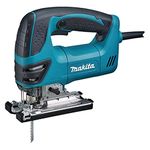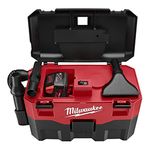Tool-Triggered Shop Vacs
A crew of carpenters reviews five machines that make cleanup easier by capturing dust before it hits the floor.

Synopsis: A shop vacuum is an invaluable tool that helps to keep work sites clear of sawdust, drywall dust, and other potentially hazardous airborne debris. A vac that turns on automatically when a dust-generating power tool is activated is an invaluable addition to any shop or work site. Carpenter Rob Wotzak and his crew tested five tool-triggered shop vacuums and reported on their performance. In this article, Wotzak describes the features that these tools have along with their strengths and weaknesses. In the end, the author’s favorite was the Festool Cleantec. The vacuum labeled best value was the Fein Turbo.
For most of my carpentry career, my routine has been to work all day with various power tools, make a large mess, and clean up just before heading home at night. My dust-control measures were limited to a standard shop vacuum, a broom, and a dust pan. Working with tool-triggered vacuums, which are actuated by the power switch on a portable tool, has changed my perspective on job-site cleanliness. These machines make cleanup easy by collecting dust as it’s made, extracting it through the dust port on my random-orbit sander, power planer, miter saw, and other power tools. More important, they reduce the amount of dust in the air, increasing the healthfulness of my workspace.
My crew and I recently tried out five of these vacuums during a carriage-house restoration project. Keeping the 2000-sq.-ft. space clean while processing hundreds of linear feet of boards with saws, sanders, and planers gave us plenty of time with each vacuum. I also brought the vacs back to my shop for even more cleanup work.
The vacuums in this review range in price from $270 to $500 and have a variety of features that surely will sway purchasing decisions based on the type of work you do.
Tool-triggered vacuums are really easy to use. Connect the vacuum hose to the exhaust port of the power tool in use, plug its cord into the receptacle on the vacuum, and press the switch or turn the dial that activates the automatic function. The vacuum starts operating when you turn on the power tool or pull the tool’s trigger. When the tool is shut off or the trigger is released, the vacuum continues to run for several seconds to extract any residual dust left in the hose.
Of course, you can use these vacuums in normal mode, sucking up dust, debris, and water through various wands and nozzles.
Power controls allow optimum performance and circuit protection
My old vacuum was grossly underpowered. Sure, it would suck up sawdust and fine drywall debris, but at the end of the day, I still found myself sweeping up larger shavings along with stray nails and drywall screws. All the vacuums in this review picked up this type of debris with ease. In fact, no one on my crew even clogged a machine during the time the vacuums were in our possession.
A few machines have power-management systems designed to maximize tool performance without overloading electrical circuits. The Festool and the Bosch vacs allow you to dial down the power demand of the vacuum motor, thus allocating more amps to the tool you’re using. The Festool can be modified to draw as few as 3 amps or as many as 10 amps. Aside from circuit protection, Festool suggests turning down the vacuum’s power when using sanders. At full power, the suction can hold a sander firmly to the wood’s surface, adversely affecting sanding quality.
For more photos and details, click the View PDF button below:
Fine Homebuilding Recommended Products
Fine Homebuilding receives a commission for items purchased through links on this site, including Amazon Associates and other affiliate advertising programs.

Makita Top-Handle Jigsaw (4350FCt)

Metabo HPT Compact Cordless Miter Saw (C3607DRAQ4)

Milwaukee Cordless Shop Vac (0880-20)


















